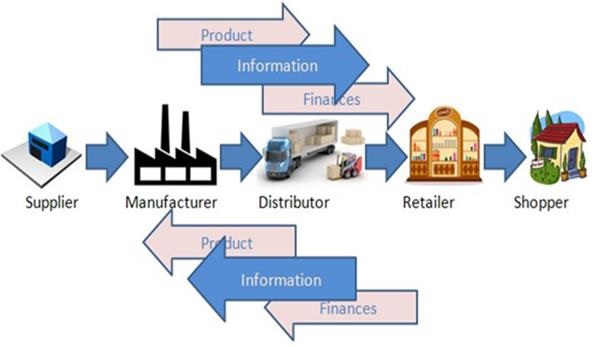 Future Performance Training
Future Performance Training
Supply Chain Management can be defined as the management of the flow of products and services, which begins from the origin of products and ends at the product’s consumption. It also comprises movement and storage of raw materials that are involved in work in progress, inventory, and fully furnished goods.
The main objective of supply chain management is to monitor and relate the production, distribution, and shipment of products and services. This can be done by companies with a very good and tight hold over internal inventories, production, distribution, internal productions, and sales.

In the above figure, we can see the flow of goods, services and information from the producer to the consumer. The picture depicts the movement of a product from the producer to the manufacturer, who forwards it to the distributor for shipment. The distributor in turn ships it to the wholesaler or retailer, who further distributes the products to various shops from where the customers can easily get the product.
Supply chain management basically merges supply and demand management. It uses different strategies and approaches to view the entire chain and work efficiently at each and every step involved in the chain. Every unit that participates in the process must aim to minimize the costs and help the companies to improve their long-term performance, while also creating value for its stakeholders and customers. This process can also minimize the rates by eradicating unnecessary expenses, movements, and handling.
Here we need to note that supply chain management and supply chain event management are two different topics to consider. The Supply Chain Event Management considers the factors that may interrupt the flow of an effective supply chain; possible scenarios are considered and accordingly, solutions are devised for them.